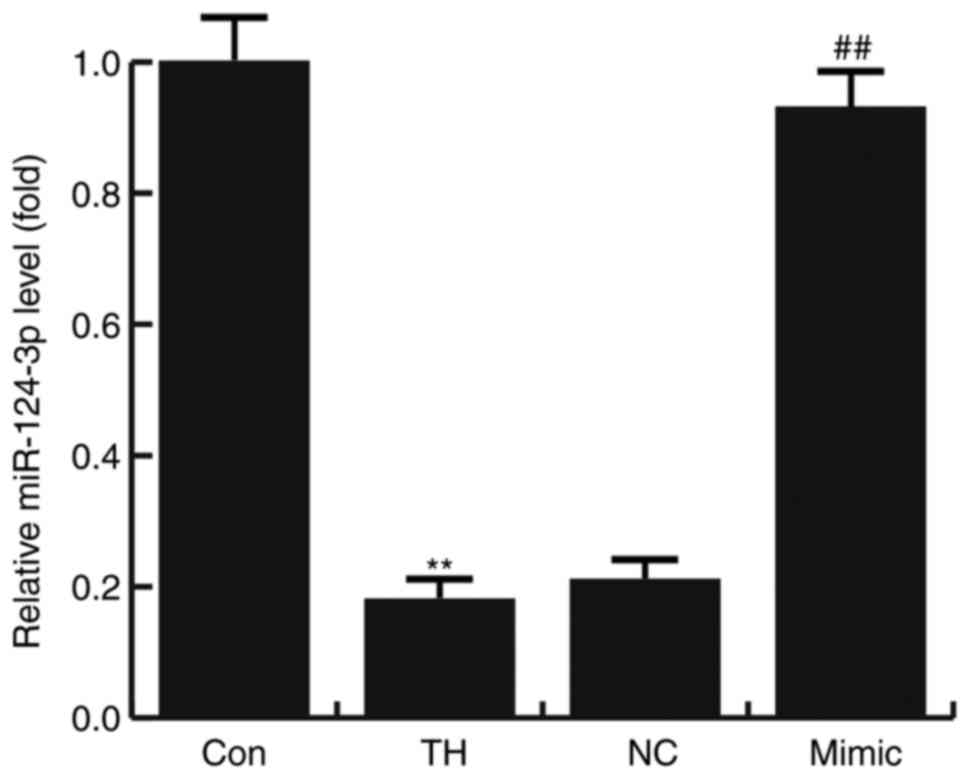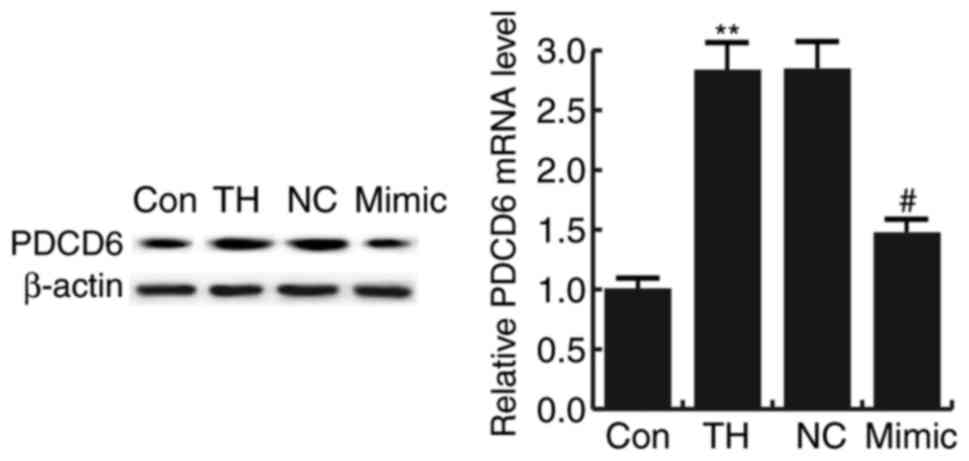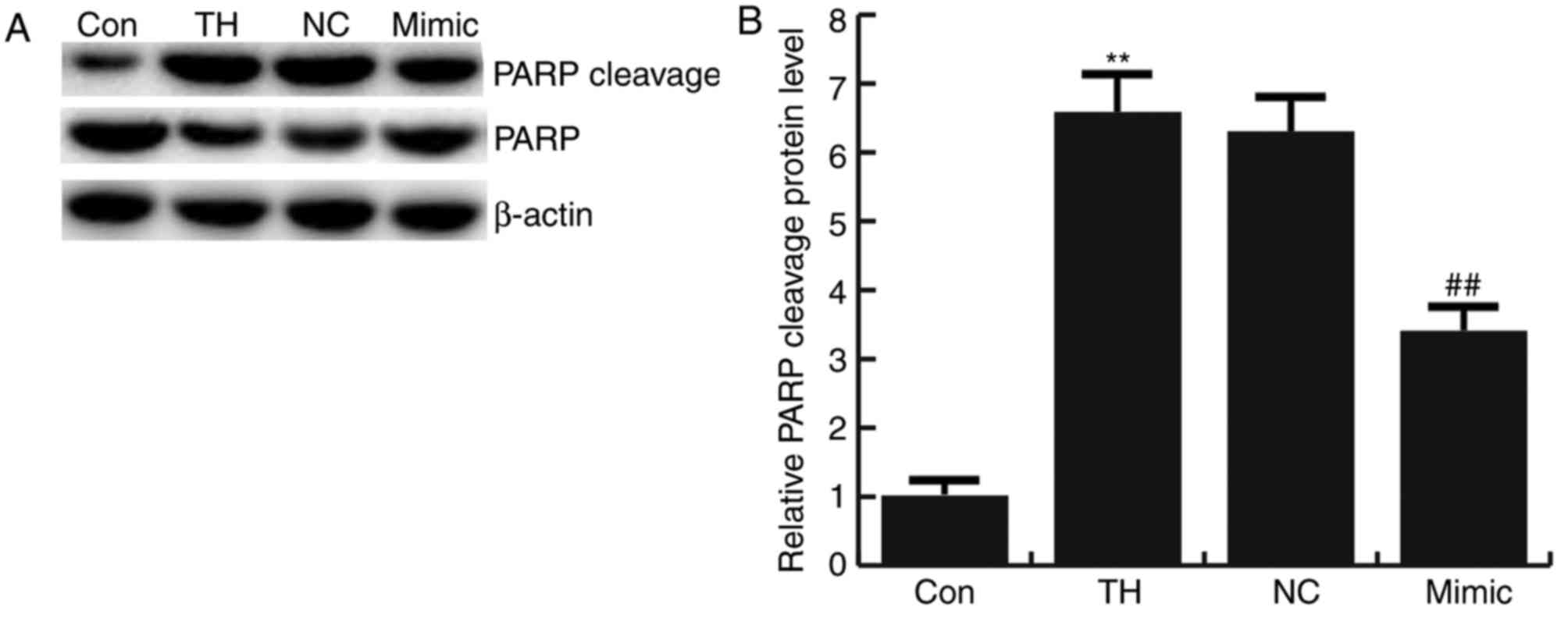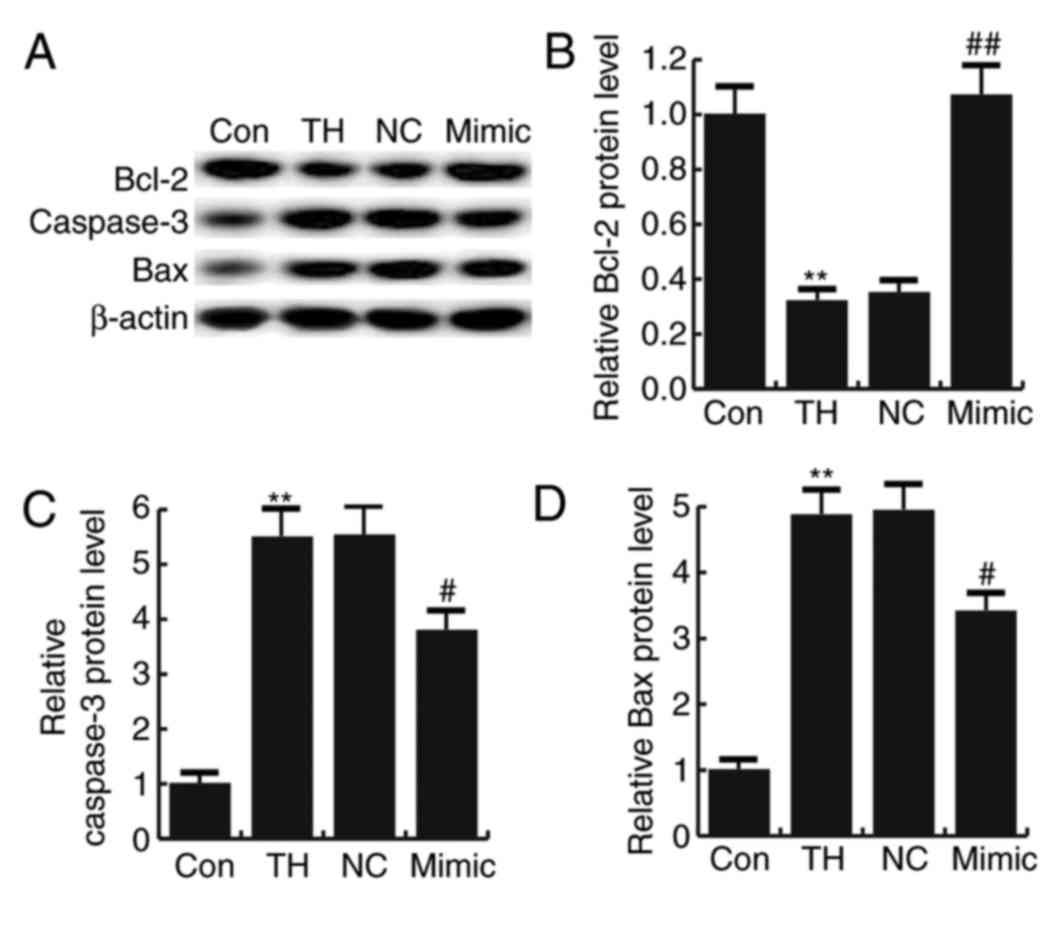|
1
|
Kollati Y, Ambati RR, Reddy PN, Kumar NSS,
Patel RK and Dirisala VR: Congenital hypothyroidism: Facts, Facets
& Therapy. Curr Pharm Des. 23:2308–2313. 2017. View Article : Google Scholar : PubMed/NCBI
|
|
2
|
de Oña Ruiz C, Obregón MJ, del Rey Escobar
F and de Escobar Morreale G: Developmental changes in rat brain
5′-deiodinase and thyroid hormones during the fetal period: The
effects of fetal hypothyroidism and maternal thyroid hormones.
Pediatr Res. 24:588–594. 1988. View Article : Google Scholar : PubMed/NCBI
|
|
3
|
Zhai X: Effects of thyroid hormone
replacement therapy on thyroid hormone levels and electrocardiogram
changes in geriatric patients with hypothyroidism. Pak J Pharm Sci
(5 Suppl). 30:S1939–S1942. 2017.
|
|
4
|
Shukla GC, Singh J and Barik S: MicroRNAs:
Processing, maturation, target recognition and regulatory
functions. Mol Cell Pharmacol. 3:83–92. 2011.PubMed/NCBI
|
|
5
|
Fisher DA: Second International conference
on neonatal thyroid screening: Progress report. J Pediatr.
102:653–654. 1983. View Article : Google Scholar : PubMed/NCBI
|
|
6
|
Harris KB and Pass KA: Increase in
congenital hypothyroidism in New York State and in the United
States. Mol Genet Metab. 91:268–277. 2007. View Article : Google Scholar : PubMed/NCBI
|
|
7
|
Alm J, Hagenfeldt L, Larsson A and
Lundberg K: Incidence of congenital hypothyroidism: Retrospective
study of neonatal laboratory screening versus clinical symptoms as
indicators leading to diagnosis. Br Med J (Clin Res Ed).
289:1171–1175. 1984. View Article : Google Scholar : PubMed/NCBI
|
|
8
|
LaFranchi SH and Austin J: How should we
be treating children with congenital hypothyroidism? J Pediatr
Endocrinol Metab. 20:559–578. 2007. View Article : Google Scholar : PubMed/NCBI
|
|
9
|
Bongers-Schokking JJ and de Muinck
Keizer-Schrama SM: Influence of timing and dose of thyroid hormone
replacement on mental psychomotor, and behavioral development in
children with congenital hypothyroidism. J Pediatr. 147:768–774.
2005. View Article : Google Scholar : PubMed/NCBI
|
|
10
|
Bartel DP: MicroRNAs: Target recognition
and regulatory functions. Cell. 136:215–233. 2009. View Article : Google Scholar : PubMed/NCBI
|
|
11
|
Kozomara A and Griffiths-Jones S: miRBase:
Integrating microRNA annotation and deep-sequencing data. Nucleic
Acids Res. 39:(Database Issue). D152–D157. 2011. View Article : Google Scholar : PubMed/NCBI
|
|
12
|
Filipowicz W, Bhattacharyya SN and
Sonenberg N: Mechanisms of post-transcriptional regulation by
microRNAs: Are the answers in sight? Nat Rev Genet. 9:102–114.
2008. View
Article : Google Scholar : PubMed/NCBI
|
|
13
|
Ghorbani S, Talebi F, Chan WF, Masoumi F,
Vojgani M, Power C and Noorbakhsh F: MicroRNA-181 variants regulate
T cell phenotype in the context of autoimmune neuroinflammation.
Front Immunol. 8:7582017. View Article : Google Scholar : PubMed/NCBI
|
|
14
|
Song J and Kim YK: Identification of the
Role of miR-142-5p in Alzheimer's Disease by Comparative
Bioinformatics and Cellular Analysis. Front Mol Neurosci.
10:2272017. View Article : Google Scholar : PubMed/NCBI
|
|
15
|
Grasso M, Piscopo P, Confaloni A and Denti
MA: Circulating miRNAs as biomarkers for neurodegenerative
disorders. Molecules. 19:6891–6910. 2014. View Article : Google Scholar : PubMed/NCBI
|
|
16
|
Geng L, Liu W and Chen Y: miR-124-3p
attenuates MPP+-induced neuronal injury by targeting STAT3 in
SH-SY5Y cells. Exp Biol Med (Maywood). 242:1757–1764. 2017.
View Article : Google Scholar : PubMed/NCBI
|
|
17
|
Huang S, Ge X, Yu J, Han Z, Yin Z, Li Y,
Chen F, Wang H, Zhang J and Lei P: Increased miR-124-3p in
microglial exosomes following traumatic brain injury inhibits
neuronal inflammation and contributes to neurite outgrowth via
their transfer into neurons. FASEB J: fj.201700673R. 2017.
|
|
18
|
Dong RF, Zhang B, Tai LW, Liu HM, Shi FK
and Liu NN: The Neuroprotective role of MiR-124-3p in a
6-Hydroxydopamine-induced cell model of Parkinson's disease via the
regulation of ANAX5. J Cell Biochem. 116:269–277. 2017.
|
|
19
|
Shao Q, Jiang W and Jin Y: MiR-124 effect
in neuron apoptosis in newborn rat with thyroid hypofunction. Int J
Clin Exp Pathol. 8:14465–14471. 2015.PubMed/NCBI
|
|
20
|
Fabian ID, Rosner M, Fabian I,
Vishnevskia-Dai V, Zloto O, Maman Shinderman E, Cohen K, Ellis M,
Lin HY, Hercbergs A, et al: Low thyroid hormone levels improve
survival in murine model for ocular melanoma. Oncotarget.
6:11038–11046. 2015. View Article : Google Scholar : PubMed/NCBI
|
|
21
|
Xu LJ, Ouyang YB, Xiong X, Stary CM and
Giffard RG: Post-stroke treatment with miR-181 antagomir reduces
injury and improves long-termbehavioral recovery in mice after
focal cerebral ischemia. Exp Neurol. 264:1–7. 2015. View Article : Google Scholar : PubMed/NCBI
|
|
22
|
Livak KJ and Schmittgen TD: Analysis of
relative gene expression data using real-time quantitative PCR and
the 2(-Delta Delta C(T)) method. Methods. 25:402–408. 2001.
View Article : Google Scholar : PubMed/NCBI
|
|
23
|
Hashemi M, Yousefi J, Hashemi SM, Amininia
S, Ebrahimi M, Taheri M and Ghavami S: Association between
programmed cell death 6 interacting protein insertion/deletion
polymorphism and the risk of breast cancer in a sample of Iranian
Population. Dis Markers. 2015:8546212015. View Article : Google Scholar : PubMed/NCBI
|
|
24
|
Zhou B, Bai P, Xue H, Zhang Z, Shi S,
Zhang K, Wang Y, Wang K, Quan Y, Song Y and Zhang L: Single
nucleotide polymorphisms in PDCD6 gene are associated with the
development of cervical squamous cell carcinoma. Fam Cancer.
14:1–8. 2015. View Article : Google Scholar : PubMed/NCBI
|
|
25
|
Zhang D, Wang F, Pang Y, Zhao E, Zhu S,
Chen F and Cui H: ALG2 regulates glioblastoma cell proliferation,
migration and tumorigenicity. Biochem Biophys Res Commun.
486:300–306. 2017. View Article : Google Scholar : PubMed/NCBI
|
|
26
|
Wang X, Zuo D, Yuan Y, Yang X, Hong Z and
Zhang R: MicroRNA-183 promotes cell proliferation via regulating
programmed cell death 6 in pediatric acute myeloid leukemia. J
Cancer Res Clin Oncol. 143:169–180. 2017. View Article : Google Scholar : PubMed/NCBI
|
|
27
|
Su D, Xu H, Feng J, Gao Y, Gu L, Ying L,
Katsaros D, Yu H, Xu S and Qi M: PDCD6 is an independent predictor
of progression free survival in epithelial ovarian cancer. J Transl
Med. 10:312012. View Article : Google Scholar : PubMed/NCBI
|
|
28
|
Sun Y, Gui H, Li Q, Luo ZM, Zheng MJ, Duan
JL and Liu X: MicroRNA-124 protects neurons against apoptosis in
cerebral ischemic stroke. CNS Neuroscience Ther. 19:813–819.
2013.
|
|
29
|
Alnemri ES, Livingston DJ, Nicholson DW,
Salvesen G, Thornberry NA, Wong WW and Yuan J: Human ICE/CED-3
protease nomenclature. Cell. 87:1711996. View Article : Google Scholar : PubMed/NCBI
|
|
30
|
Salvesen GS: Caspases: Opening the boxes
and interpreting the arrows. Cell Death Differ. 9:3–5. 2002.
View Article : Google Scholar : PubMed/NCBI
|
|
31
|
Oltvai ZN, Milliman CL and Korsmeyer SJ:
Bcl-2 heterodimerizes in vivo with a conserved homolog, Bax, that
accelerates programmed cell death. Cell. 74:609–619. 1993.
View Article : Google Scholar : PubMed/NCBI
|
|
32
|
Cleary ML, Smith SD and Sklar J: Cloning
and structural analysis of cDNAs for bcl-2 and a hybrid
bcl-2/immunoglobulin transcript resulting from the t(14;18)
translocation. Cell. 47:19–28. 1986. View Article : Google Scholar : PubMed/NCBI
|















